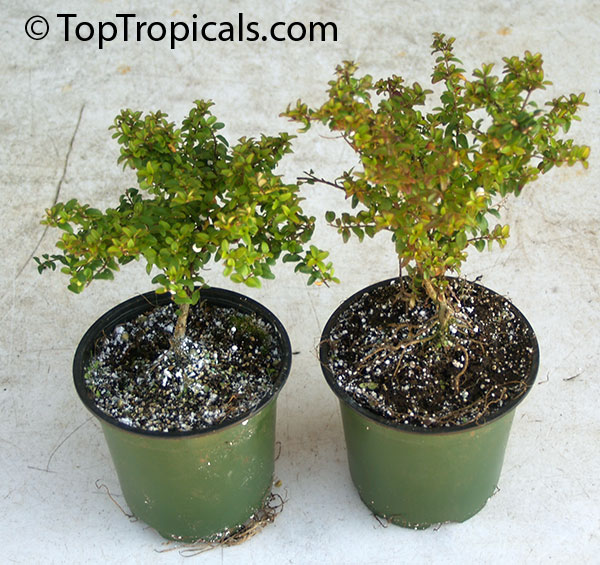Caprifoliaceae - Botanical Family
| Number of plants found: 19 | Next | 
|
Go to page: | 1 | 2 |
Botanical name: Abelia grandiflora
Common name: Glossy Abelia
Family: Caprifoliaceae
Origin: China











Abelia is a popular evergreen or semi-evergreen shrub with a rounded, fountain-like growth habit. It is fast-growing, growing up to 4-8 feet tall and 4-6 feet wide. Its leaves are fine-textured, glossy, oval, and dark green, usually 2 inches long, and the new growth has a bronze color. Abelia produces small, white and pink tubular flowers in clusters at the end of its stems, from summer to fall. The flowers are barely one inch long, but they are slightly fragrant - which attracts hummingbirds and butterflies.
This shrub is a great choice for planting near a pool, as it loves both full sun and semi-shade exposure. When watering it, allow the soil to dry out between waterings. It is mostly pest- and disease-free. Mature Abelias can withstand temperatures as low as 30 degrees Fahrenheit for a limited time.
Hyperacanthus amoenus is another popular evergreen shrub. It has pinkish red flowers with off-white petals that are fragrant, followed by green fruits that turn brown when ripe. This shrub is easy to grow, needing only full sun and regular watering - though it should be in USDA Zones 8 -9 for full protection from cold weather. For areas with colder climates, it is recommended to keep the plant in a pot and move it indoors in winter. In such a case, extra care should be taken to make sure it has enough water, light and fertilizer. Pruning may also be necessary to ensure the plant remains within the size desired.
Botanical name: Abelia sp.
Common name: Abelia
Family: Caprifoliaceae










The flowers appear in the upper leaf axils and stem ends, 1-8 together in a short cyme; they are pendulous, white to pink, bell-shaped with a five-lobed corolla.
The species from warm climates are evergreen, and colder climate species deciduous.
Botanical name: Dipelta sp.
Common names: Dipelta, Boxleaf Honeysuckle
Family: Caprifoliaceae
Origin: China











Fragrant, funnel-shaped, foxglove-like, pinkish-white flowers with yellow throats which bloom singly or in clusters from late April to June.
Dipelta is similar to Kolkwitzia amabilis
Botanical names: Heptacodium miconioides, Heptacodium jasminoides
Common name: Seven Sons plant
Family: Caprifoliaceae
Origin: China











Heptacodium miconioides is a deciduous species native to China and is commonly referred to as the Seven Sons plant. Growing rapidly, it can reach up to 5-10 ft tall in the form of a large shrub, or 10-20 ft when a small tree. Generally, it prefers full sun or semi-shade, while requiring regular water. This plant blooms with white or off-white flowers that have a delightful fragrance and attract butterflies and hummingbirds. Once the flowers fade and drop, they are replaced by fuchsia calyxes that last well into autumn.
This species is hardy to USDA Zone 5-9. For colder regions, it is best to grow this plant in a pot and bring it indoors during the winter. If keeping indoors, it should be placed near a window that receives plenty of sunlight. Also, make sure to monitor the soil moisture to maintain the ideal level to keep your Heptacodium miconioides healthy and vibrant.
Botanical names: Kolkwitzia amabilis, Linnaea amabilis
Common name: Beauty Bush
Family: Caprifoliaceae
Origin: Central China









The genus Kolkwitzia contains only this species. Deciduous shrub, up to 12 feet tall (3.6 m), 10 feet spread (3 m). The blossom in spring is extremely nice.
Botanical name: Leycesteria formosa
Common names: Himalayan Honeysuckle,Flowering Nutmeg, Himalaya Nutmeg
Family: Caprifoliaceae
Origin: China, Himalaya










The flowers are produced on 5-10 cm long pendulous racemes; each flower is small, white, subtended by a purple bract. White honeysuckle flowers are held in drooping clusters of deep red bracts, later followed by showy purple-black edible berries. The fruit is a soft purple-black berry 1 cm diameter, eaten by birds which disperse the seeds.
Botanical name: Leycesteria gracilis
Common name: Leycesteria
Family: Caprifoliaceae
Origin: temperate Asia








Botanical name: Lonicera fragrantissima
Common name: Winter Honeysuckle
Family: Caprifoliaceae
Origin: China










Winter honeysuckle is a somewhat stiff-branched, deciduous shrub with a bushy, spreading habit. Extremely fragrant, short-tubed, creamy white flowers appear in early spring before the leaves emerge.
Botanical name: Lonicera japonica
Common names: Japanese Honeysuckle, Halls honeysuckle
Family: Caprifoliaceae
Origin: Japan













The Japanese Honeysuckle (Lonicera japonica) is an evergreen vine or creeper, and it is native to Japan. This plant is best grown in full sun to semi-shade, and it will tolerate moderate watering. It has white to off-white flowers that can be tinged with yellow or orange, and they are very fragrant, making this a popular choice for attracting butterflies and hummingbirds. This vine can become invasive, so it's best to practice regular pruning. The mature plant is cold-hardy and can handle temperatures of at mid 20s degrees Fahrenheit for a short time. This honeysuckle is also tolerant of seaside and salt, and it is most often grown in USDA Hardiness Zones 8-10.
If you're growing the Japanese Honeysuckle in a pot in colder regions, it's important to choose a larger container to give the roots plenty of room for growth. Make sure you select a well-draining potting soil and that you relocate the pot to a sheltered spot in the winter months. Ensure the pot doesn't freeze by covering it with a cloth or plastic, and move it back outside once the winter weather has passed. Pay attention to the soil moisture levels, and water when the topsoil is dry. If you have a warmer climate, you can let the soil dry out between waterings, but don't allow the plant to suffer from drought stress. Enjoy the sights, smells, and sounds that this plant will bring to your garden.
Botanical name: Lonicera nitida
Common name: Box Honeysuckle
Family: Caprifoliaceae












Bushy, evergreen shrub small yellow-green leaves. Useful for hedging and topiary. Often used for bonsai. Dense, fast growing bush up to 5-6 ft tall. Mature plants develop heavy, thick trunks. Plant produces small white/cream flowers followed by purple berries.
Prefers full sun or partial shade. Easily controlled in height and form by pruning. Among the best evergreen shrubs for striking winter effects of foliage.
| Next |  |
Use link to repeat this search:
https://toptropicals.com/cgi-bin/garden_catalog/cat.cgi?search_op=and&keyword_op=and&language=e&family=Caprifoliaceae
&number=10&no_change_lang=1&user=tt&sale=1&first=0







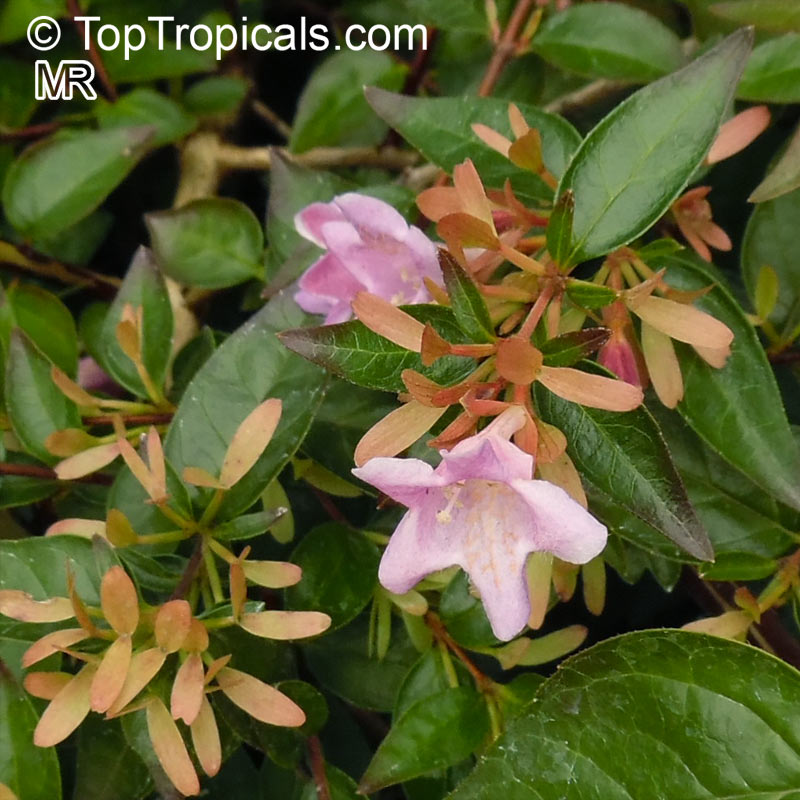












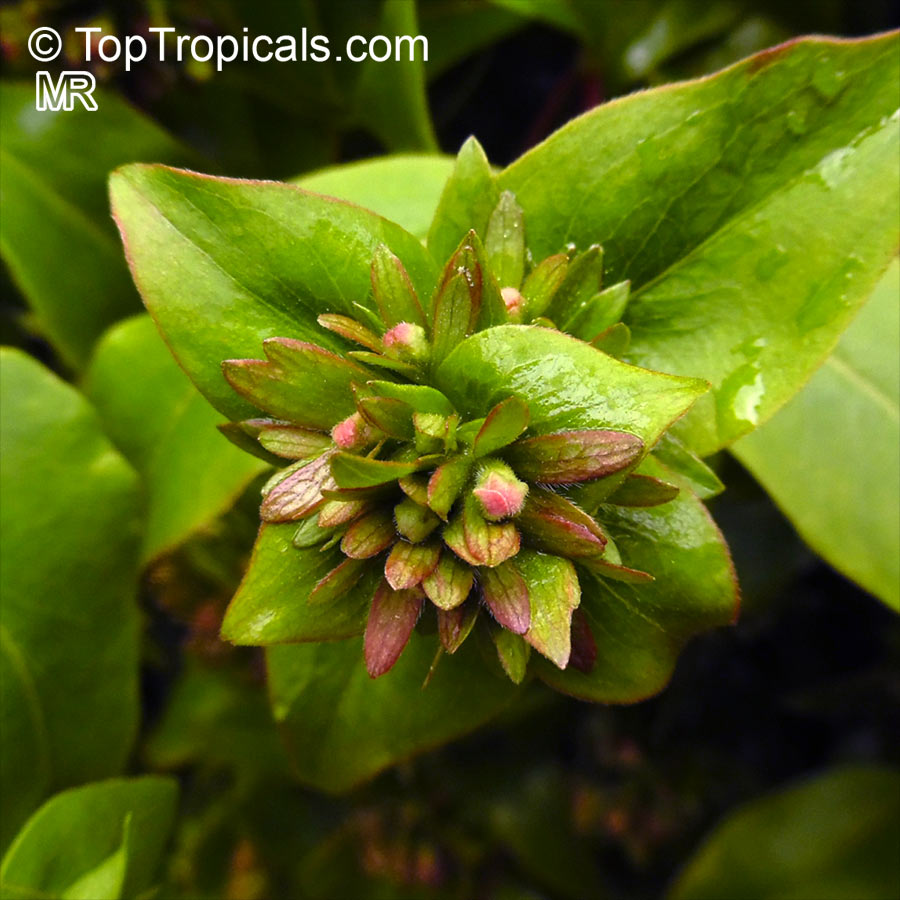








































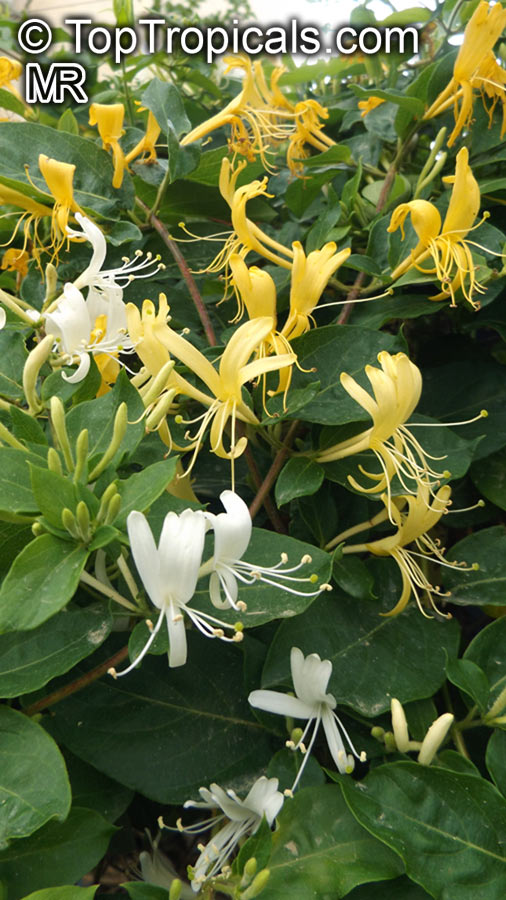





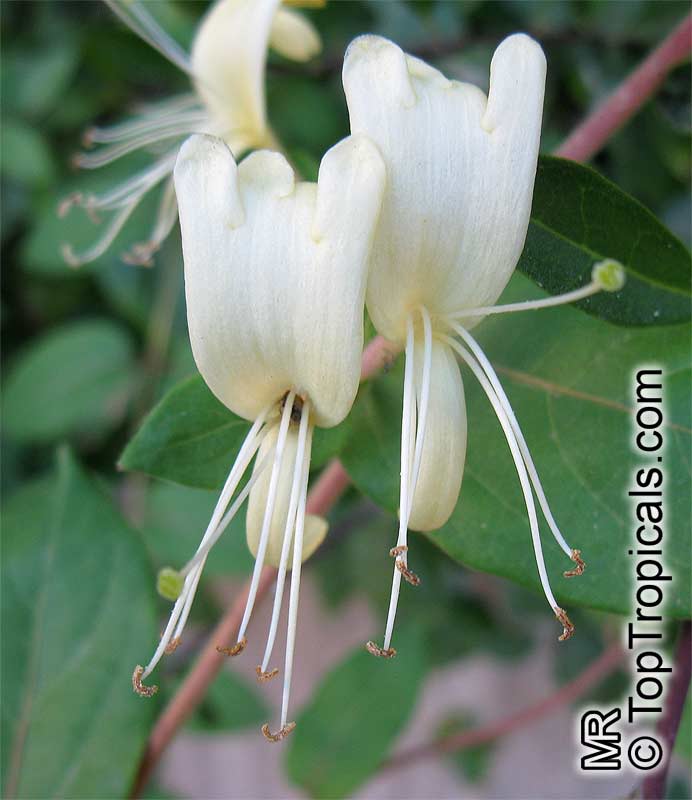
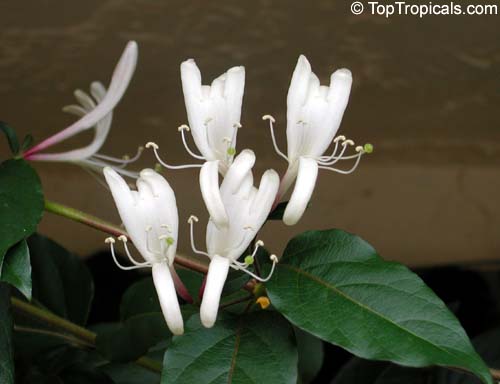
















 SUNSHINE Pikake (NPK 2-2-4) - eco-friendly concentrated nutrition booster for fragrant flowers. Improves quantity and quality of flowers. Encourages profuse blooming. Increases flower fragrance intensity. Can be used with every watering. For best results, use in combination with
SUNSHINE Pikake (NPK 2-2-4) - eco-friendly concentrated nutrition booster for fragrant flowers. Improves quantity and quality of flowers. Encourages profuse blooming. Increases flower fragrance intensity. Can be used with every watering. For best results, use in combination with 


